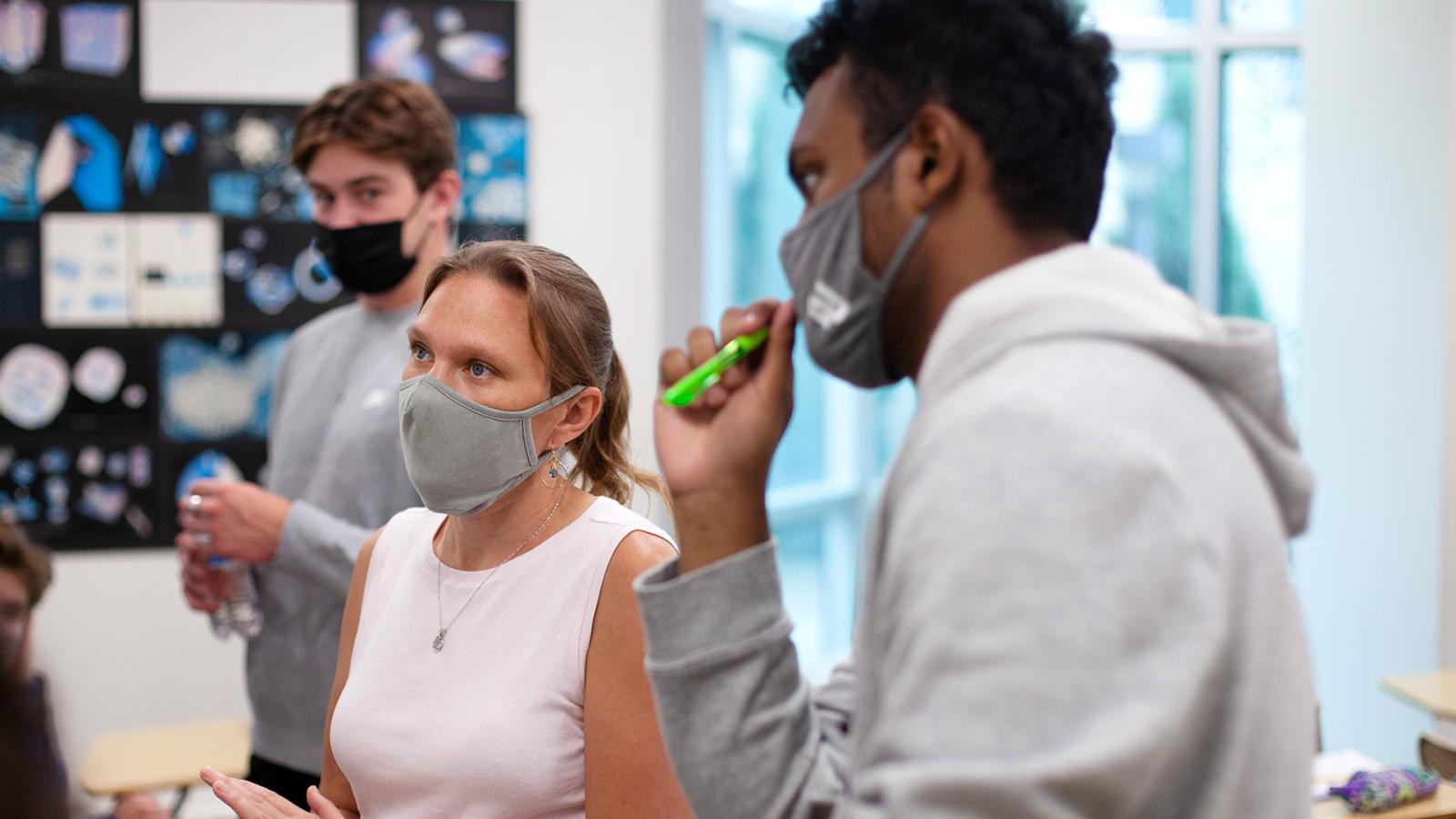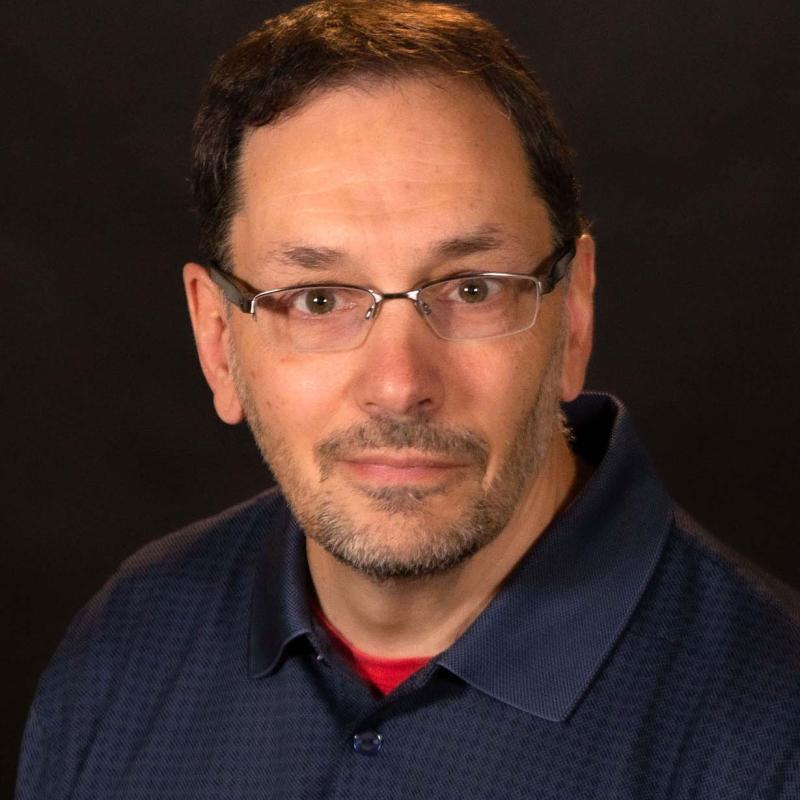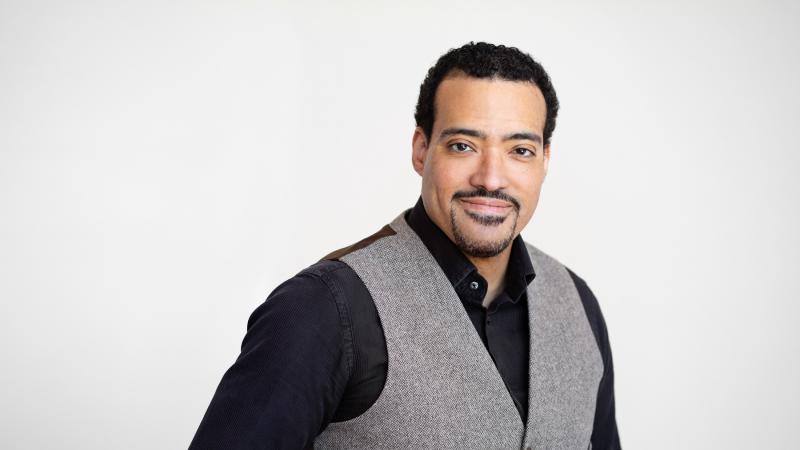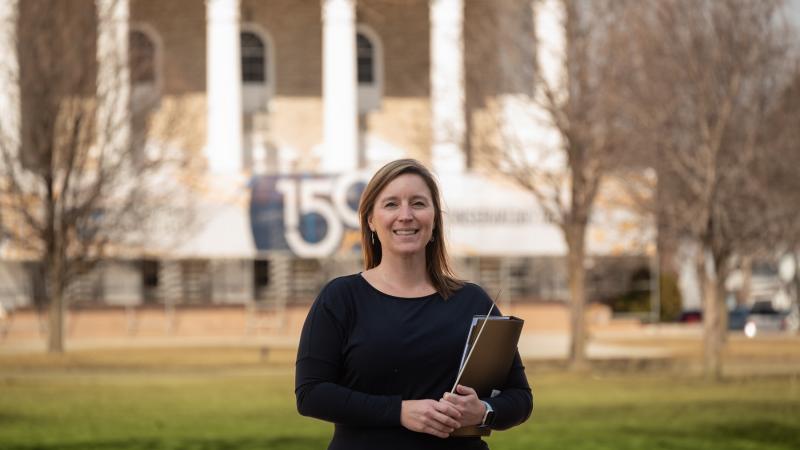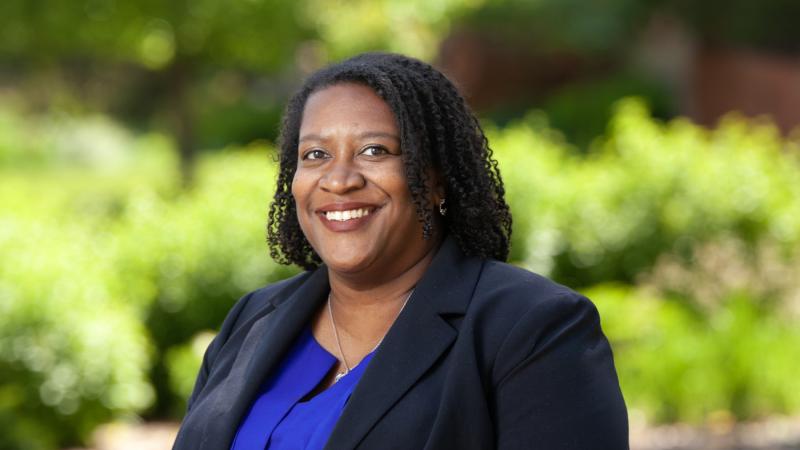Two Lawrence University faculty members—Julie Rana in Mathematics and Israel Del Toro in Biology—are the recipients of six-figure national grants that will further their research and bring more Lawrence students into the research process.
Two other faculty members—Lori Hilt ’97 in Psychology and Beth Zinsli ’02 in Art History— received five-figure national grants to enhance their work.
Catherine Gunther Kodat, provost and dean of faculty, said bringing in four national grants this fall speaks to the breadth of the high-level work being done by Lawrence’s faculty. It comes on the heels of Lawrence being named one of the best liberal arts colleges for undergraduate teaching by U.S. News and World Report.
“It’s wonderfully gratifying to see our faculty receiving national recognition for something we at Lawrence have always known—our faculty are gifted, dedicated teachers who are also engaged in ground-breaking scholarship across the full range of the liberal arts disciplines,” Kodat said. “Being able to count such accomplished individuals as colleagues is a true privilege.”
NSF math grant supports research, inclusive pedagogy
Rana, assistant professor of mathematics since 2017, was awarded a two-year grant of $192,905 through the National Science Foundation’s Launching Early-Career Academic Pathways in the Mathematical and Physical Sciences (LEAPS-MPS) program. It’s a first-time grant, awarded to pre-tenure faculty. It’s a huge accomplishment for Rana, with only 21 grants awarded across the country.
A portion of the grant will allow Rana to work on research in algebraic geometry related to moduli spaces, collaborating with math scholars in Europe, Chile, and elsewhere in the United States. The funding will allow her to hire four students in each of the next two summers to work with her on research in an area of math known as graph theory.
“The best part of this project is that students will join a community of peers working together on fun and interesting math problems,” Rana said. “Mathematics is a very collaborative discipline, and I’m just thrilled that I get to share that joy of collaboration with students over the next two summers.”
In addition, the grant will cover costs of work Rana is doing in developing math curriculum and support mechanisms aimed at making Lawrence’s mathematics, computer science, and data science programs more inclusive and accessible. She’s developing two new math courses—Mathematics and Community (developed in collaboration with senior Caitlyn Lansing), debuting in Winter Term, and Modern BIPOC Mathematicians, debuting next year—and organizing inclusive pedagogy reading groups among the faculty.
The grant is covering the costs of bringing two speakers to campus who have been significant voices in improving inclusivity in STEM fields. Both are women of color who have carved out impressive careers as math scholars and have authored or edited works aimed at widening the path into the mathematics field.
Emille Lawrence, an associate professor and chair of Mathematics and Statistics at the University of San Francisco, is expected to visit Lawrence in Winter Term, Rana said. She is the editor of the American Mathematical Society’s Math Mamas blog and co-edited Living Proof, a collection of essays featuring mathematicians of various identities sharing how they found communities and persevered through professional challenges.
Pamela E. Harris, an associate professor of mathematics and statistics at Williams College, is expected to visit during the 2022-23 academic year. She has been a leading voice for diversity, equity, and inclusion in the STEM fields, math in particular. She co-founded Lathisms.org, a platform that features the contributions of Latinx and Hispanic math scholars, and co-hosts the podcast, Mathematically Uncensored. She’s the co-author of two books advocating for students of color in mathematics.
The NSF grant will allow for all of these initiatives to move forward at once.
“I worked hard to get this grant,” Rana said. “I’m really proud that I got it because there just aren’t very many of us who got it.”
Rana said the collaborations with other math scholars who are focused on algebraic geometry will take her research to another level. She’ll have the opportunity to travel to other institutions to work directly with her collaborators, and she’ll be able to bring some of them to Lawrence.
“Without this, I wouldn’t be able to go work with them in person,” she said. “It’s a lot easier to do math in person.”
Bee research focus of NSF grant

Israel Del Toro
Del Toro, an assistant professor of biology since 2016, was awarded a two-year, $199,957 EAGER grant from the National Science Foundation to enhance the research he’s doing on bee conservation. The grant will allow Del Toro to supersize his research, including bringing more students into the process.
Over the past five years, Del Toro has done extensive field work on pollinator habitats, advocating for bee conservation not only on campus but across the Fox Valley. This grant will allow him to take that work into a lab, investigating the varied reasons that bees are good pollinators. He’ll be collaborating with colleagues at the University of Wisconsin-Madison, using microtomography (microCT) technology to take a closer look at the inner workings of bees.
“We are taking a look under the hood of a bee,” Del Toro said. “And really taking a peek to see why the internal parts of the bee allow them to be effective pollinators.”
Read more: Lawrence on front lines of bee advocacy
Del Toro will be using the microCT technology at UW. He and his students also will be doing experiments in the lab at Lawrence that relate to climate change.
“We’ll be doing thermal tolerance, figuring out how bees are affected as we increase and decrease temperature,” he said. “We want to see how increases and decreases in temperatures affect bee behavior and bee restoration and try to make predictions of how these populations would be affected in the future.”
Over the two years of the grant, eight Lawrence students will be able to join Del Toro in his research.
“I’m actively recruiting students who have interest in ecology or microscopy or pollinator biology,” he said. “Those are the students I’m looking to take on. We’re going to learn some really cool new things about pollinators, but also how to better protect our pollinators in light of climate change.”
Psychology grant to help build on adolescent rumination research

Lori Hilt
Hilt, an associate professor of psychology, received a subaward for more than $51,000 throughHarvard University from the National Institutes of Health. She will serve as an expert on adolescent rumination on a five-year clinical trial. It follows a three-year $368,196 grant she received from NIH in 2019 to study adolescent rumination and the development of a mobile app designed as a coping tool for young people.
Adolescent rumination refers to a mindset in which someone can’t get beyond the negative things that are happening around them. Where most kids will process something bad that has happened, react to it and then move on, an adolescent struggling with rumination will dwell on the negative information, stew on it until it consumes them, unable to let go.
Read more: 2019 NIH grant helps professor develop mental health app
“The new NIH grant is a really nice follow-up to my other NIH grant,” Hilt said. “In our previous grant research, we found that using a brief mindfulness mobile app intervention that we developed — known as the CARE app — reduced rumination and mental health symptoms relative to a mood-monitoring control condition. The new grant will similarly recruit ruminative teens and ask them to use a mindfulness mobile app, this time for one month using the Headspace app vs. a control condition.”
The primary study site is at Harvard’s McLean Hospital. A functional magnetic resonance imaging (fMRI) scan will be done before and after the teens use the app.
“This will allow us to see whether a brief mindfulness intervention changes brain network patterns that have been associated with rumination,” Hilt said.
This grant will allow Hilt and other participants to take a personalized medicine approach by examining which teens benefit from mindfulness training.
“This is something that we started looking at in our other grant, and it offers a promising new approach to mental health—being able to know if a particular intervention will work before engaging in it,” Hilt said.
NEH grant to provide insights into preserving Teakwood Room
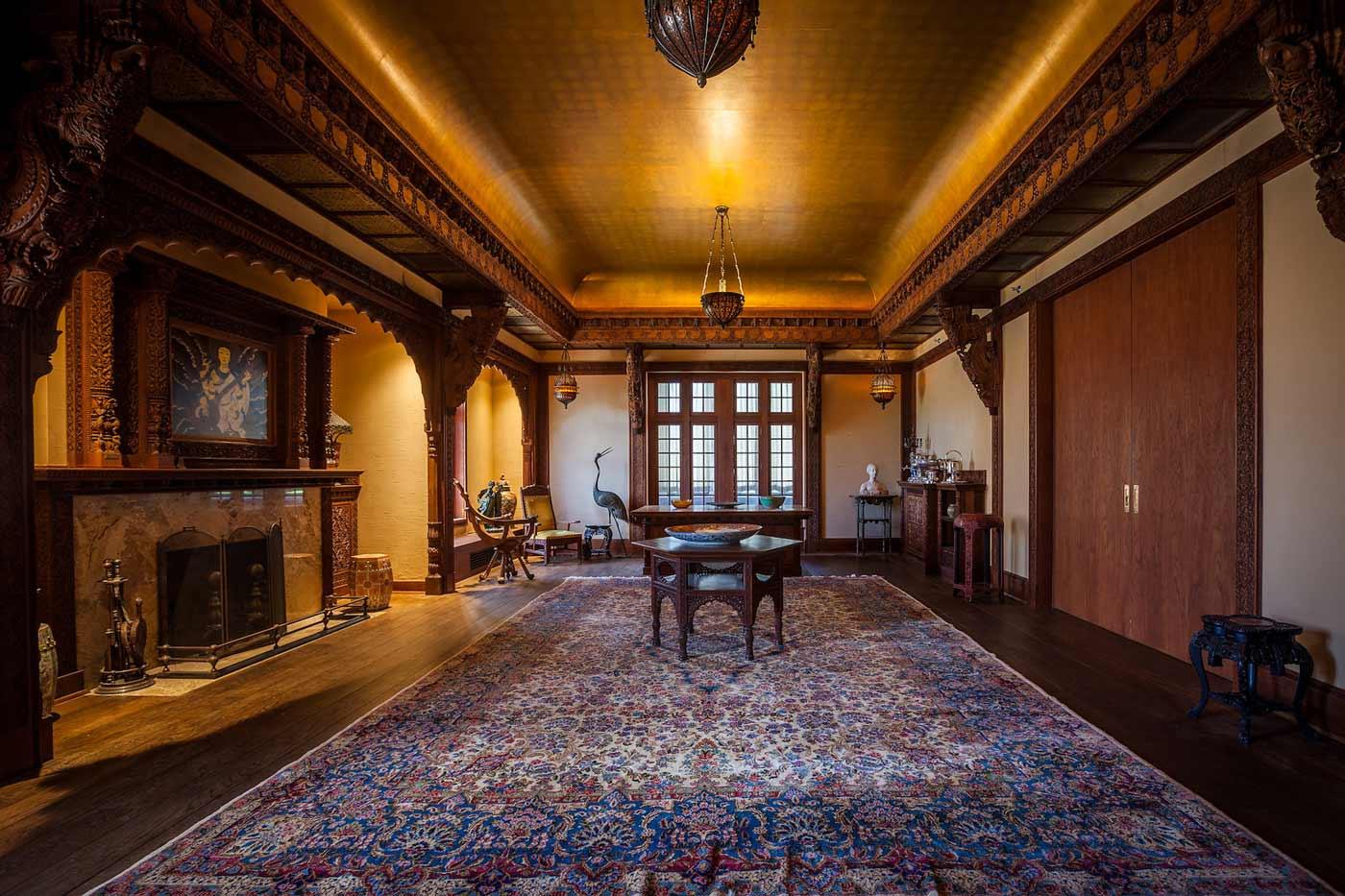
Teakwood Room
Zinsli, assistant professor of art history and curator of the Wriston Art Center Galleries, was awarded a $10,000 Preservation Assistance Grant from the National Endowment for the Humanities. The grant will provide a professional assessment of the Teakwood Room and its contents so that Lawrence knows best how to steward the room going forward.
Zinsli called the room “a university treasure and a distinctive piece of global material culture” that needs careful attention.
“The recommendations from the assessment report will allow LU to steward the room and its objects responsibly and expand access to the space,” she said.
Read more: Teakwood Room among the treasures of Lawrence
The Teakwood Room, located in Chapman Hall, was originally built by American artist and architect Lockwood de Forest in Alice Chapman’s Milwaukee home. After Chapman died in 1935, the Teakwood Room was placed in Chapman Library on the Milwaukee-Downer campus and used for receptions, poetry readings, and chamber music. When Lawrence and Downer consolidated in 1964, members of the Downer community asked that the room be preserved. The room was carefully disassembled and stored in a warehouse until 1968, when it was reassembled at Lawrence.
